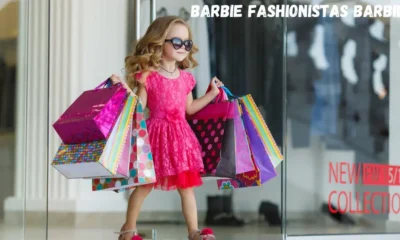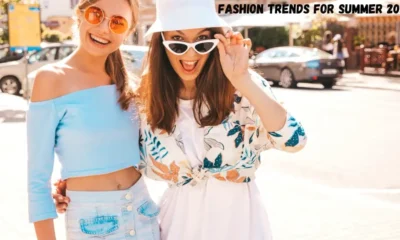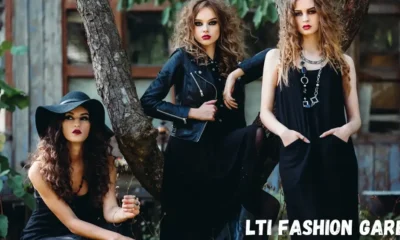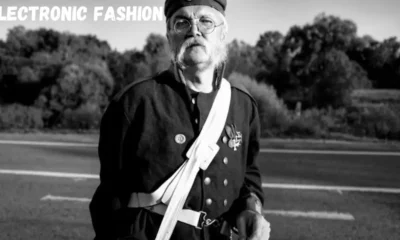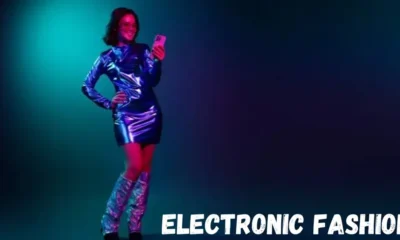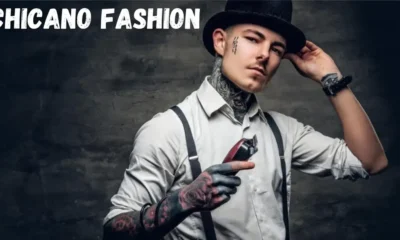Fashion
African Fashion Dresses: A Celebration of Culture, Color, and Creativity
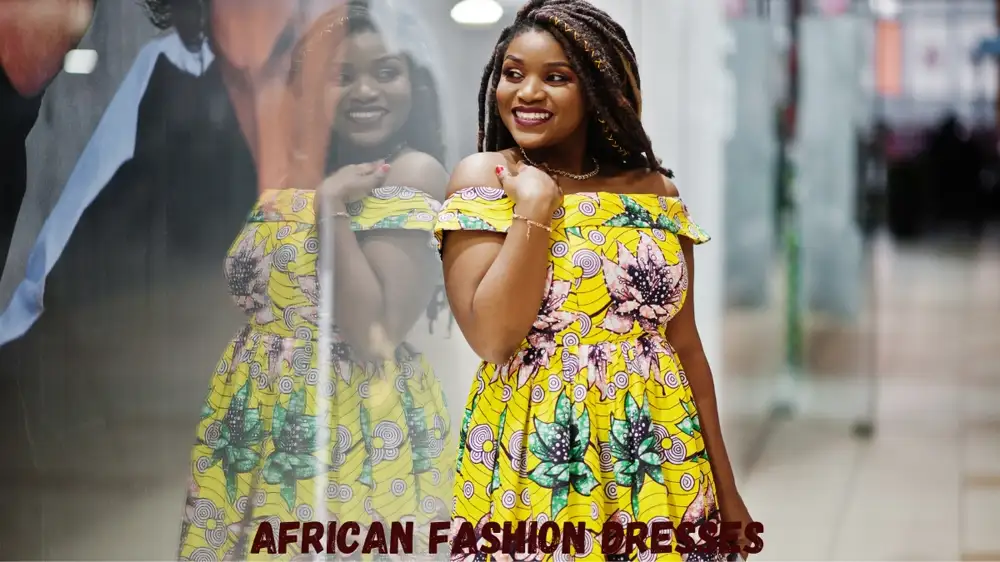
African fashion dresses are more than just clothing—they’re vibrant storytellers, cultural symbols, and a testament to the continent’s rich heritage. From bold Ankara prints to intricately woven Kente patterns, these dresses have captivated global runways, red carpets, and everyday wardrobes. In this article, we’ll explore the history, styles, and future of African fashion dresses, along with tips for styling them and supporting sustainable practices. Let’s dive in!
The Rich History Behind African Fashion Dresses
African fashion is deeply rooted in tradition, with each fabric and design reflecting the values, history, and identity of its people. Here are some iconic textiles that have shaped African fashion dresses:
Ankara (African Wax Prints)
Ankara, often called “African print,” is a colorful, wax-resistant cotton fabric. Surprisingly, its origins trace back to 19th-century Indonesia. Dutch colonists attempted to mass-produce Indonesian batik but accidentally created a new technique. When these fabrics reached West Africa through trade, local artisans adapted them, infusing African motifs like geometric shapes, animals, and proverbs. Today, Ankara is synonymous with African pride and creativity.
Kente Cloth
Originating from Ghana’s Ashanti Kingdom, Kente is a handwoven silk and cotton fabric known for its dazzling colors and intricate patterns. Each design has a name and meaning—for example, “Adweneasa” (“my skill is exhausted”) symbolizes excellence. Traditionally reserved for royalty, Kente is now used in modern dresses to celebrate milestones like graduations and weddings.
Bògòlanfini (Mudcloth)
Mudcloth, made by Mali’s Bambara people, is dyed using fermented mud and plant extracts. The process involves hand-painting symbols that tell stories of community, nature, or history. Modern designers use mudcloth to create minimalist yet striking dresses that connect wearers to ancestral wisdom.
Shweshwe
This South African fabric has a unique backstory. Indigo-dyed Shweshwe was introduced by European settlers in the 19th century but became a staple in Xhosa and Sotho cultures. Its tiny geometric patterns are now featured in dresses that blend tradition with contemporary cuts.
Popular Styles of African Fashion Dresses
African fashion dresses come in countless styles, each with cultural significance. Here are some standout designs:
The Dashiki Dress
The Dashiki, a loose-fitting tunic from West Africa, has inspired flowing dresses adorned with V-shaped necklines and embroidery. Modern versions use bold Ankara prints, making them perfect for casual outings or festivals.
The Boubou (Kaftan)
The Boubou, a flowing robe worn across West Africa, has evolved into elegant, floor-length dresses. Designers often add lace, sequins, or beadwork for formal events. Its loose fit makes it ideal for hot climates.
Aso Ebi
Popular in Nigeria, Aso Ebi refers to matching outfits worn by families or friends at celebrations. Aso Ebi dresses often feature lace, sequins, or Ankara, symbolizing unity and joy.
Kitenge Dresses
Kitenge, similar to Ankara but heavier, is widely used in East Africa. Dresses made from Kitenge often feature ruffled sleeves, peplum waists, or asymmetrical hemlines, blending tradition with modern flair.
Modern Adaptations: Buba and Iro
The Buba (blouse) and Iro (wrap skirt) from Nigeria are increasingly fused into one-piece dresses. These designs combine comfort and elegance, often accessorized with gele (head wraps).
The Language of Color and Patterns
African fashion dresses speak through their hues and motifs:
- Red: Symbolizes passion, spirituality, or sacrifice.
- Gold: Represents wealth, status, and prosperity (common in Kente).
- Blue: Linked to harmony and love, seen in indigo-dyed Shweshwe.
- Animal Prints: Leopard spots or zebra stripes signify strength and courage.
Patterns also tell stories. For example, Ghanaian Adinkra symbols like “Gye Nyame” (“Except for God”) convey faith, while Ndebele designs from South Africa use angular lines to represent community bonds.
African Fashion Dresses in Contemporary Culture
African designers are reshaping global fashion. Labels like Laduma Ngxokolo’s MaXhosa (South Africa) and Lisa Folawiyo (Nigeria) blend traditional textiles with modern silhouettes. Celebrities like Beyoncé and Lupita Nyong’o have spotlighted African dresses on international stages, fueling demand.
Events like Lagos Fashion Week and AfriNXT showcase innovation, from laser-cut Ankara to dresses made from recycled materials. Social media platforms like TikTok have also democratized access, with influencers styling African dresses in edgy, relatable ways.
How to Style African Fashion Dresses
- Accessorize Thoughtfully: Pair bold prints with neutral jewelry. Add a beaded necklace or woven clutch for authenticity.
- Mix Eras: Wear a Kaftan dress with sneakers for a casual look, or pair a mudcloth mini with leather boots.
- Layer Smartly: Throw on a denim jacket over a Dashiki dress for cooler weather.
- Play with Headwraps: A gele or turban adds drama to simple dresses.
Sustainability: The Heart of African Fashion
Many African designers prioritize eco-friendly practices:
- Ethical Sourcing: Brands like Studio 189 use organic cotton and natural dyes.
- Upcycling: Designers transform secondhand fabrics into unique dresses.
- Community Empowerment: Cooperatives like Women Weave in Kenya provide fair wages to female artisans.
By choosing ethically made African dresses, you support both the environment and local economies.
Where to Buy Authentic African Fashion Dresses
- Local Markets: Visit Accra’s Makola Market or Nairobi’s Maasai Market for handmade pieces.
- Online Platforms: Try Afrikrea (global artisan collective) or Tongoro (sustainable Sudanese brand).
- Pop-Up Shops: Follow African designers on Instagram for virtual launches.
The Future of African Fashion Dresses
Emerging trends include:
- Tech-Infused Designs: 3D-printed accessories and augmented reality fashion shows.
- Gender-Neutral Styles: Designers like Rich Mnisi are reimagining dresses beyond gender norms.
- Heritage Preservation: Young creatives are digitizing traditional patterns to keep stories alive.
Here are five unique and original frequently asked questions about African fashion dresses that complement the article above. These questions address popular curiosities and provide helpful insights for readers:
FAQs About African Fashion Dresses
1. What makes African fashion dresses unique compared to other cultural clothing?
African fashion dresses stand out because of their vibrant colors, intricate patterns, and deep cultural significance. Each fabric, like Ankara or Kente, tells a story through its motifs and symbols, connecting wearers to their heritage. Additionally, African dresses often blend traditional craftsmanship with modern designs, making them versatile for both cultural events and contemporary fashion.
2. Can African fashion dresses be worn in colder climates?
Absolutely! While many African dresses are designed for warm weather, they can be adapted for colder climates. Layering is key—pair a Boubou or Dashiki dress with a cozy cardigan, tights, or boots. You can also opt for dresses made from heavier fabrics like Kitenge or Shweshwe, which provide more warmth.
3. How do I care for and maintain African print dresses?
To preserve the vibrant colors and quality of African print dresses:
- Hand wash or use a gentle machine cycle with cold water.
- Avoid harsh detergents and bleach.
- Dry in the shade to prevent fading.
- Iron on low heat, preferably inside out, to protect the prints.
Proper care ensures your dress remains stunning for years!
4. Are African fashion dresses suitable for formal events?
Yes! African fashion dresses are incredibly versatile and can be styled for formal occasions. Look for dresses made from luxurious fabrics like lace, silk, or embroidered Ankara. Designs like the Aso Ebi or embellished Kaftans are perfect for weddings, galas, or red-carpet events. Pair them with elegant accessories like statement earrings or a beaded clutch for a polished look.
5. How can I support ethical and sustainable African fashion brands?
Supporting ethical African fashion brands is easy and impactful:
- Research brands that prioritize fair wages, eco-friendly materials, and traditional craftsmanship.
- Buy directly from artisans or trusted platforms like Afrikrea or Studio 189.
- Spread awareness by sharing your purchases on social media and encouraging others to shop sustainably.
By choosing ethical brands, you preserve African heritage and empower local communities.
Final Thoughts
African fashion dresses are a dynamic blend of past and present, offering wearers a way to celebrate identity while making a global statement. Whether you’re drawn to Kente’s history or modern brands’ eco-conscious ethos, there’s an African dress waiting to tell your story.
By embracing these garments, you’re not just wearing art—you’re supporting centuries-old traditions and the innovators shaping tomorrow’s fashion landscape.
Most People also ask questions on Google
1. What is the name of the African dress?
African dresses come in many styles and names, depending on the region and culture. Some popular ones include:
- Dashiki: A loose-fitting, colorful tunic from West Africa, often worn as a dress or paired with pants.
- Boubou (or Kaftan): A long, flowing robe worn across West Africa, often made from luxurious fabrics like silk or cotton.
- Aso Ebi: A matching outfit worn by families or friends at celebrations, common in Nigeria.
- Kitenge Dress: Made from East African Kitenge fabric, these dresses often feature bold prints and modern cuts.
Each dress has its own unique style and cultural significance.
2. What is African traditional costume?
African traditional costumes vary widely across the continent, reflecting the diversity of its cultures. Some examples include:
- Agbada: A flowing robe worn by men in West Africa, often for special occasions.
- Kente Cloth: A handwoven fabric from Ghana, used to make dresses, skirts, and wraps.
- Shuka: A red-checkered cloth worn by the Maasai people of Kenya and Tanzania, often draped over the body.
- Isiagu: A traditional Igbo (Nigeria) outfit featuring a lion-head motif, worn with a wrapper or skirt.
These costumes are deeply tied to cultural identity and are often worn during festivals, weddings, or ceremonies.
3. What is the most popular African cloth?
The most popular African cloth is Ankara, also known as African wax print. It’s loved for its bright colors, bold patterns, and versatility. Ankara is used to make dresses, skirts, shirts, and even accessories. Other popular fabrics include:
- Kente: A colorful, handwoven fabric from Ghana.
- Kitenge: Similar to Ankara but heavier, commonly used in East Africa.
- Mudcloth (Bògòlanfini): A traditional Malian fabric dyed with mud, known for its unique patterns.
These fabrics are not only beautiful but also carry cultural meanings.
4. What is African fashion?
African fashion is a celebration of the continent’s rich culture, history, and creativity. It includes traditional clothing like Dashikis, Kente dresses, and Boubous, as well as modern designs inspired by African prints and patterns. African fashion is known for its vibrant colors, intricate details, and storytelling through fabrics. Today, African designers are gaining global recognition, blending tradition with contemporary styles to create unique and stylish clothing.
5. What is the black dress called?
The term “black dress” can refer to different styles, but in African fashion, a popular black dress is the “Little Black Dress” (LBD) made with African prints or fabrics. For example, a black Ankara dress with colorful patterns or a black Kente dress with gold accents. These dresses combine the elegance of a classic black dress with the boldness of African designs, making them perfect for both casual and formal occasions.
6. Do Muslims wear Dashiki?
Yes, Muslims can and do wear Dashiki. The Dashiki is a versatile garment that is not tied to any specific religion. It is worn by people of various faiths across Africa and the diaspora. For Muslims, the Dashiki’s loose fit and modest design make it a comfortable and stylish choice, especially during religious events or everyday wear. Some Dashikis are even designed with Islamic-inspired patterns or calligraphy to cater to Muslim wearers.
Fashion
Discover the World of Barbie Fashionistas Barbie: Inclusivity, Style, and Innovation
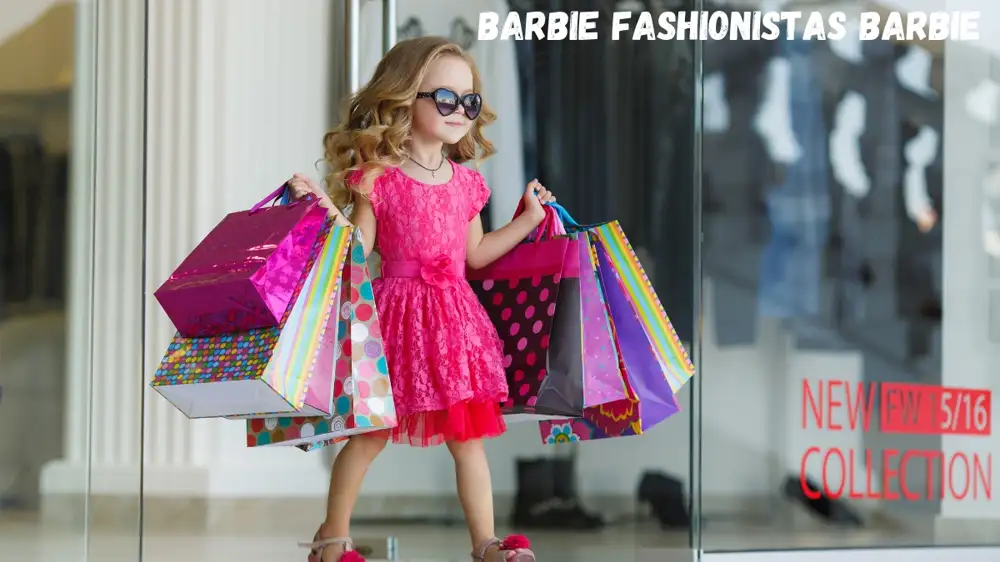
Barbie has been a cultural icon since 1959, but the Barbie Fashionistas Barbie line is rewriting her legacy. Launched in 2016, this collection celebrates diversity, self-expression, and modern fashion like never before. Whether you’re a collector, parent, or fan, here’s your ultimate guide to understanding why Fashionistas are more than just dolls—they’re a movement.
What Makes Barbie Fashionistas Barbie Special?
The Fashionistas line breaks away from traditional Barbie molds by offering dolls with different body types, skin tones, disabilities, and gender-neutral styles. Think curvy, tall, petite, and dolls with vitiligo, prosthetic limbs, or hearing aids. With over 176 looks and counting, this collection mirrors real-world diversity, allowing kids to see themselves in their toys.
Key Features:
- 9 Body Types: Including original, curvy, tall, petite, and more.
- 35+ Skin Tones: From pale ivory to deep ebony.
- 94 Hairstyles: Braids, afros, bobs, and even neon-colored wigs.
- 10 Eye Colors: Amber, heterochromia (two different eyes), and glitter accents.
The Evolution of Barbie Fashionistas
From Perfect Proportions to Realistic Representation
Original Barbie dolls faced criticism for unrealistic body standards. In 2016, Mattel responded with Fashionistas, introducing curvy, tall, and petite body types. By 2020, the line expanded to include dolls with disabilities, vitiligo, and alopecia. In 2023, Mattel added kinky, coily hair textures and color-changing hair that reacts to cold water.
Behind the Scenes: How Fashionistas Are Designed
Mattel’s design team collaborates with cultural experts and kids. For example, the doll with a wheelchair was tested with children who use mobility aids to ensure accuracy. Designers also use 3D printing to prototype unique facial features, like freckles or cleft chins.
Hidden Details You Didn’t Know About
- Eco-Friendly Efforts: Select Fashionistas use recycled ocean-bound plastic in packaging and accessories. The 2023 “Earth Love” sub-line features dolls with outfits made from upcycled fabrics.
- Articulation Secrets: Some dolls have hidden joints under clothing for dynamic poses, like yoga or dancing.
- Collaborations: Fashionistas have partnered with real-life influencers, like Aaron Philip (a transgender model with cerebral palsy) and Pretty Pastel Please (a YouTuber with a doll mimicking her pastel style).
Why Barbie Fashionistas Matter Today
Teaching Empathy Through Play
Studies show diverse toys help children develop empathy. A 2022 UCLA report found kids who play with dolls like Fashionistas are 24% more likely to discuss differences in skin color or abilities openly.
Cultural Impact
- Fashionistas have been featured in TIME Magazine’s “Best Inventions” list (2020).
- The doll with a prosthetic leg was displayed at the Smithsonian National Museum of American History.
How to Choose the Right Fashionista Barbie
For Kids:
- Let them pick a doll that reflects their identity or inspires them.
- Look for articulated limbs if they love posing dolls.
For Collectors:
- Limited editions like the #TBT Collection (vintage-inspired styles) or Barbie x Fashion Nova dolls hold value.
- Check for Mattel Creations exclusives, like the 2023 Dia de Muertos Fashionista.
Pro Tip: Dolls with “rare” features (e.g., heterochromatic eyes) often sell out fastest!
The Future of Barbie Fashionistas
Mattel plans to launch augmented reality (AR) Fashionistas in 2024, where kids can scan dolls to unlock digital outfits. Rumors also suggest a scented hair line (think strawberry or mint) and dolls with magnetic accessories for easier styling.
5 Basic FAQs
1. Are Barbie Fashionistas Barbie dolls suitable for children under 3 years old?
While Barbie Fashionistas are designed for kids aged 3 and up, parents should always check the packaging for small accessories like shoes or jewelry that could pose a choking hazard. For younger kids, consider dolls with fewer detachable parts or opt for the Barbie Fashionistas Mini line, which features smaller, simpler designs.
2. Can I customize my Barbie Fashionista Barbie doll?
Absolutely! Barbie fashionistas are perfect for customization. Their hair can be washed, styled, and even dyed (with safe, kid-friendly dyes). You can also swap outfits with other Barbie dolls or create DIY clothing. Some collectors even repaint the dolls’ faces or add unique details like tattoos or piercings for a personal touch.
3. How do I clean and maintain my Barbie Fashionista Barbie doll?
To keep your doll looking fresh:
- Hair Care: Use a mild shampoo and cold water to wash the hair. Avoid hot water, as it can damage synthetic fibers.
- Stains: Gently wipe the doll’s body with a damp cloth and mild soap. For tough stains, a magic eraser works wonders.
- Storage: Keep dolls in a cool, dry place to prevent discoloration. Store accessories in a small bag to avoid losing them.
4. Are there any rare or limited-edition Barbie Fashionista dolls?
Yes! Limited-edition fashionistas, like the Dia de Muertos Collection or collaborations with brands like Fashion Nova, are highly sought after. Dolls with unique features, such as heterochromatic eyes or vitiligo, also tend to sell out quickly. Check Mattel Creations or specialty toy stores for exclusive releases.
5. Do Barbie Fashionistas Barbie dolls come with careers or backstories?
While Fashionistas focus on fashion and inclusivity, many dolls come with implied careers based on their outfits. For example, a doll in a lab coat might be a scientist, while one in athletic wear could be a fitness trainer. However, the line emphasizes self-expression over specific roles, allowing kids to create their own stories.
Conclusion: More Than a Doll—A Reflection of Us
Barbie Fashionistas Barbie isn’t just a toy—it’s a celebration of individuality. By embracing flaws, disabilities, and global beauty standards, this line empowers kids to love themselves and others. Whether you’re gifting, collecting, or rediscovering Barbie, Fashionistas prove that everyone deserves to shine.
Ready to join the movement? Explore the latest Barbie Fashionistas [here] and find the doll that speaks to you!
People also ask questions on Google
1. Is Barbie 43 years old?
No, Barbie is not 43 years old. Barbie was first introduced on March 9, 1959, which makes her 64 years old (as of 2023). She was created by Ruth Handler, the co-founder of Mattel, and has since become one of the most iconic toys in history.
2. How many Barbie Fashionistas are there?
As of 2023, there are over 176 unique Barbie Fashionistas in the collection. The line is constantly expanding, with new dolls released every year featuring different body types, skin tones, hairstyles, and disabilities. This makes it one of the most diverse and inclusive doll lines in the world.
3. Which is the costliest Barbie in the world?
The costliest Barbie in the world is the Stefano Canturi Barbie, created in 2010. This doll wears a stunning diamond necklace designed by Australian jeweler Stefano Canturi. The necklace alone is worth $302,500, making it the most expensive Barbie ever sold. It was auctioned for charity, raising funds for breast cancer research.
4. Who is the Barbie girl in the real world?
The term “Barbie girl” often refers to Margot Robbie, the actress who played Barbie in the 2023 live-action Barbie movie. However, the phrase originally comes from the 1997 song “Barbie Girl” by the Danish-Norwegian band Aqua. In the song, the “Barbie girl” is a fictional character representing the doll’s glamorous and fun-loving persona.
5. Is Barbie older than Ken?
Yes, Barbie is older than Ken. Barbie debuted in 1959, while Ken (her boyfriend) was introduced two years later in 1961. This means Barbie is 2 years older than Ken. Over the years, Ken has evolved alongside Barbie, with his own Fashionistas line and diverse looks.
6. What is Barbie’s real name?
Barbie’s full name is Barbara Millicent Roberts. This name was revealed in the 1960s through a series of Barbie books and has been part of her official backstory ever since. According to the lore, Barbie was born in Willows, Wisconsin, and has had over 200 careers, from astronaut to doctor to president.
Fashion
The Latest Sustainable Fashion Trends for Summer 2025: Style Meets Planet-Friendly Innovation
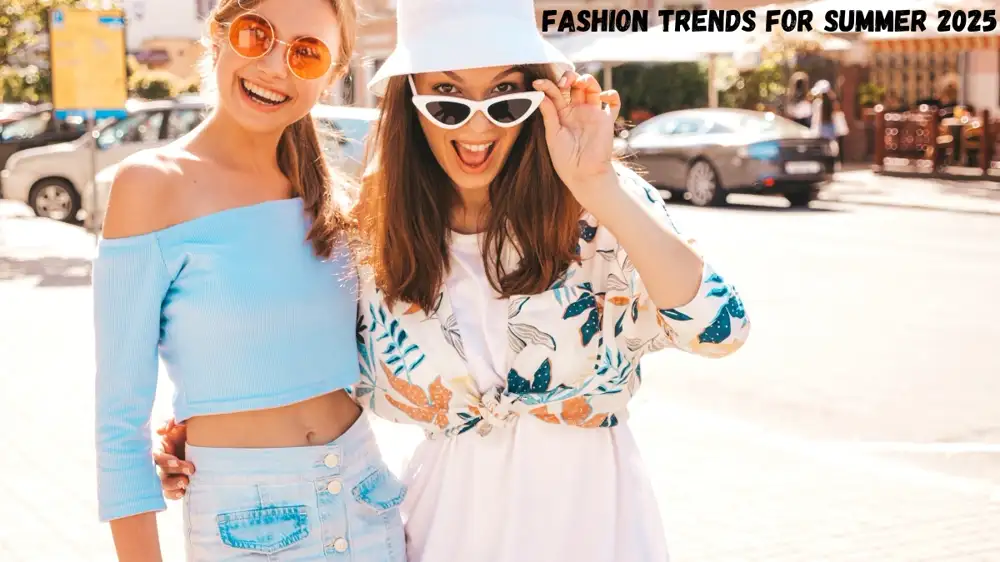
As climate concerns reshape industries, fashion is stepping up with groundbreaking solutions. Summer 2025 promises not just vibrant styles but a revolution in eco-consciousness. From algae-based bikinis to carbon-neutral accessories, let’s explore the trends redefining how we dress—responsibly.
1. Innovative Eco-Friendly Materials Taking Over
Algae Fabric: Swimwear’s New Best Friend
Imagine swimsuits made from algae! This renewable resource is hitting beaches in 2025, offering UV protection and biodegradability. Brands like AlgaeLab are turning algae into soft, durable yarns, reducing reliance on petroleum-based fabrics. Bonus: Algae cultivation absorbs CO2, making your swimsuit a climate warrior.
Mushroom Leather: Luxe & Sustainable
Move over, animal leather. Mycelium (mushroom roots) is now the star of bags, shoes, and jackets. MycoWorks leads this trend with customizable textures, proving sustainability doesn’t skimp on luxury. It’s lightweight, water-resistant, and compostable—perfect for summer adventures.
Biodegradable Sequins & Glitter
Sparkle guilt-free! Designers are swapping plastic sequins for plant-based alternatives derived from cellulose or algae. These shimmering details dissolve harmlessly in water, ensuring your festival outfit won’t pollute oceans.
2. Zero-Waste Production: Fashion’s Waste-Free Future
3D Knitting: Tailored to Perfection
Brands like Unspun use 3D knitting machines to create custom-fit garments on demand. This cuts fabric waste by 30% and slashes overproduction. Summer 2025 will see breezy knit dresses and tops made just for you—no scraps left behind.
Modular Clothing: Mix, Match, Recycle
Why buy ten outfits when one adapts? Modular designs feature detachable sleeves, reversible layers, and interchangeable buttons. Eileen Fisher’s 2025 line includes convertible wrap skirts that transform into crop tops—ideal for travel or reducing closet clutter.
Deadstock Fabrics: Rescued & Reborn
“Deadstock” (unused fabric) is getting a second life. Independent labels like Tonlé craft summer dresses and shirts from these materials, preventing landfill waste. Each piece is unique, adding exclusivity to your wardrobe.
3. The Rise of the Circular Fashion Economy
Rental Fashion: Refresh Without Regret
Why buy a sundress you’ll wear once? Platforms like Rent the Runway and By Rotation offer curated summer collections for vacations or events. In 2025, expect AI-powered styling tools to curate outfits based on your location and weather!
Repair & Redesign Services
Brands are incentivizing repairs. Patagonia’s 2025 “Re-Worn” initiative offers store credit for returned items they refurbish. Local tailors are also partnering with apps like Sojo to make mending trendy—think visible stitches or colorful patchwork.
Clothing Swaps Go High-Tech
Apps like ThredUP now host virtual swap parties where you trade clothes via AR try-ons. It’s social, sustainable, and perfect for updating your summer look.
4. Regenerative Agriculture: Fashion’s Climate Solution
Carbon-Positive Cotton
Cotton farms are adopting regenerative practices—cover crops, no tillage—to trap more CO2 than they emit. Farm to Home, a new 2025 brand, tracks each garment’s carbon footprint via blockchain, proving its climate-positive impact.
Hemp & Bamboo: The Summer Staples
Hemp requires minimal water and enriches soil. Bamboo’s natural cooling effect makes it ideal for summer tees and linen. Tent A Tent (yes, that’s the name!) offers hemp jumpsuits dyed with organic indigo, blending comfort with sustainability.
5. Tech-Driven Sustainability: Beyond the Hype
Digital Fashion: Dress Your Avatar, Save the Planet
Digital-only outfits are exploding. Brands like Auroboros create hyper-realistic virtual garments for social media, reducing physical production. For summer 2025, snap a selfie in a digital floral maxi dress—no shipping, no waste.
Blockchain Transparency
Ever wondered if your dress was ethically made? VeChain partners with brands to provide QR codes detailing a garment’s journey—from farm to factory. Scan, and you’ll know exactly how your purchase supports fair wages and eco practices.
Solar-Powered Accessories
Handbags with built-in solar panels? Vollebak’s 2025 solar clutch charges your phone using sunlight—a game-changer for outdoor festivals.
6. Colors & Designs Inspired by Nature
Earthy Palettes & Natural Dyes
Summer 2025 embraces terracotta, sage, and ocean blue. Artisans use food waste—avocado pits, onion skins—to create rich, non-toxic dyes. Maranatha offers turmeric-dyed scarves that smell like summer spices!
Minimalist Silhouettes
Less is more. Flowy linen sets, slip dresses, and oversized shirts dominate, emphasizing versatility. Pair them with bold biodegradable accessories for a pop of color.
7. Footwear & Accessories: Step Lightly
Cactus & Apple Leather Sandals
Desserto’s cactus leather sneakers and Fruitleather’s apple peel sandals are summer must-haves. They’re breathable, durable, and kinder to animals.
Upcycled Jewelry
Earrings made from e-waste? Bijou Salvage crafts statement pieces from recycled circuit boards and metals. Each pair tells a story of innovation.
How to Embrace These Trends
- Start Small: Rent one outfit or buy a modular piece.
- Support Transparent Brands: Look for B-Corp certifications.
- Repurpose: Turn old scarves into hair accessories.
5 original and unique FAQs
1. What are the best sustainable fabrics for hot summer weather?
Answer: For summer 2025, the best sustainable fabrics include organic cotton, hemp, bamboo, and Tencel (lyocell). These materials are breathable, lightweight, and eco-friendly. Hemp and bamboo, in particular, are excellent for hot weather as they have natural cooling properties and require minimal water to grow. Additionally, algae-based fabrics are emerging as a revolutionary option for swimwear, offering UV protection and biodegradability.
2. How can I make my existing wardrobe more sustainable for summer 2025?
Answer: You don’t need to buy new clothes to stay trendy! Start by upcycling—turn old jeans into shorts or dye faded shirts with natural dyes like turmeric or beetroot. Organize a clothing swap with friends to refresh your wardrobe without spending money. For repairs, visit local tailors or use apps like Sojo to mend and redesign your favorite pieces. Finally, embrace modular fashion by adding detachable accessories or reversible layers to your existing outfits.
3. Are sustainable fashion brands affordable for everyday shoppers?
Answer: Yes! While some sustainable brands can be pricey due to ethical labor and eco-friendly materials, there are affordable options too. Look for brands that use deadstock fabrics or offer rental services to save money. Thrift stores and second-hand platforms like ThredUP or Depop are also great for budget-friendly finds. Additionally, investing in high-quality, timeless pieces can save money in the long run, as they last longer than fast fashion items.
4. What role does technology play in sustainable fashion for summer 2025?
Answer: Technology is revolutionizing sustainable fashion! 3D knitting reduces fabric waste by creating custom-fit garments, while blockchain ensures transparency in the supply chain. Digital fashion allows you to wear virtual outfits on social media, reducing physical production. Apps for clothing rentals and virtual swaps make sustainable shopping convenient. Even accessories are getting smarter, with solar-powered bags and biodegradable glitter made possible through tech innovations.
5. How can I identify greenwashing in sustainable fashion brands?
Answer: Greenwashing is when brands falsely claim to be eco-friendly. To avoid it, look for third-party certifications like GOTS (Global Organic Textile Standard) or B-Corp. Check if the brand provides transparency about its supply chain, materials, and labor practices. Be wary of vague terms like “eco-friendly” without evidence. Research the brand’s initiatives—are they using recycled materials, reducing waste, or supporting fair wages? Platforms like Good On You rate brands based on their sustainability efforts, making it easier to spot genuine eco-conscious labels.
Conclusion: Fashion with a Future
Summer 2025 isn’t just about looking good—it’s about feeling good through choices that respect the planet. By embracing these trends, you become part of a movement where style and sustainability coexist beautifully. Ready to make your wardrobe a force for change? The future of fashion is here, and it’s stunning.
People also ask question on Google about Fashion Trends for Summer 2025
1. What are the fashion trends for summer 2025?
Summer 2025 is all about sustainability, innovation, and comfort. Key trends include:
- Algae-based swimwear: Eco-friendly, UV-protective, and biodegradable.
- Modular clothing: Detachable sleeves, reversible designs, and mix-and-match pieces.
- Digital fashion: Virtual outfits for social media, reducing physical waste.
- Earthy tones and natural dyes: Colors like terracotta, sage, and ocean blue, dyed with avocado pits or onion skins.
- Minimalist silhouettes: Flowy linen dresses, oversized shirts, and slip dresses.
- Tech-driven accessories: Solar-powered bags and biodegradable glitter.
2. What are the summer 2025 fabric trends?
The fabrics of summer 2025 focus on sustainability and comfort:
- Algae fabric: Used in swimwear for its eco-friendly and UV-resistant properties.
- Mushroom leather: A cruelty-free alternative for bags, shoes, and jackets.
- Hemp and bamboo: Lightweight, breathable, and perfect for hot weather.
- Organic cotton: Soft, sustainable, and ideal for everyday wear.
- Tencel (lyocell): Made from wood pulp, it’s biodegradable and moisture-wicking.
- Deadstock fabrics: Rescued unused materials turned into unique garments.
3. What is the fashion trend in Pakistan in 2025?
In Pakistan, summer 2025 fashion blends traditional craftsmanship with modern sustainability:
- Handloom fabrics: Khadi, cotton, and linen in lightweight weaves.
- Embroidery and embellishments: Sustainable versions using recycled threads and beads.
- Earthy tones and natural dyes: Inspired by Pakistan’s landscapes, with colors like mustard yellow, indigo, and rust.
- Modest wear: Flowy kurtas, palazzos, and dupattas in breathable fabrics.
- Upcycled fashion: Designers are repurposing old textiles into trendy outfits.
4. What is the fashion industry forecast for 2025?
The fashion industry in 2025 is predicted to focus on:
- Sustainability: Brands adopting circular fashion, zero-waste production, and regenerative agriculture.
- Technology: AI-powered styling, blockchain for transparency, and digital fashion.
- Rental and resale markets: Growth in platforms like Rent the Runway and ThredUP.
- Localized production: Reducing carbon footprints by manufacturing closer to consumers.
- Consumer awareness: Shoppers demanding transparency and ethical practices.
5. What is the color for summer 2025?
Summer 2025 colors are inspired by nature:
- Terracotta: Warm and earthy, perfect for boho styles.
- Sage green: Calm and refreshing, ideal for casual wear.
- Ocean blue: Cool and serene, great for swimwear and beach outfits.
- Sunset orange: Vibrant and energetic, perfect for statement pieces.
- Neutral tones: Beige, cream, and taupe for minimalist looks.
6. What is the trend in patterns in 2025?
Patterns in 2025 are bold yet nature-inspired:
- Floral prints: Oversized and abstract, with natural dye techniques.
- Geometric designs: Clean lines and shapes, often in earthy tones.
- Tie-dye: Sustainable versions using plant-based dyes.
- Animal prints: Ethically inspired, with faux fur and recycled materials.
- Patchwork: Upcycled fabrics stitched into unique, colorful designs.
Fashion
Discover LTI Fashion Garbi: The Future of Sustainable and Stylish Clothing
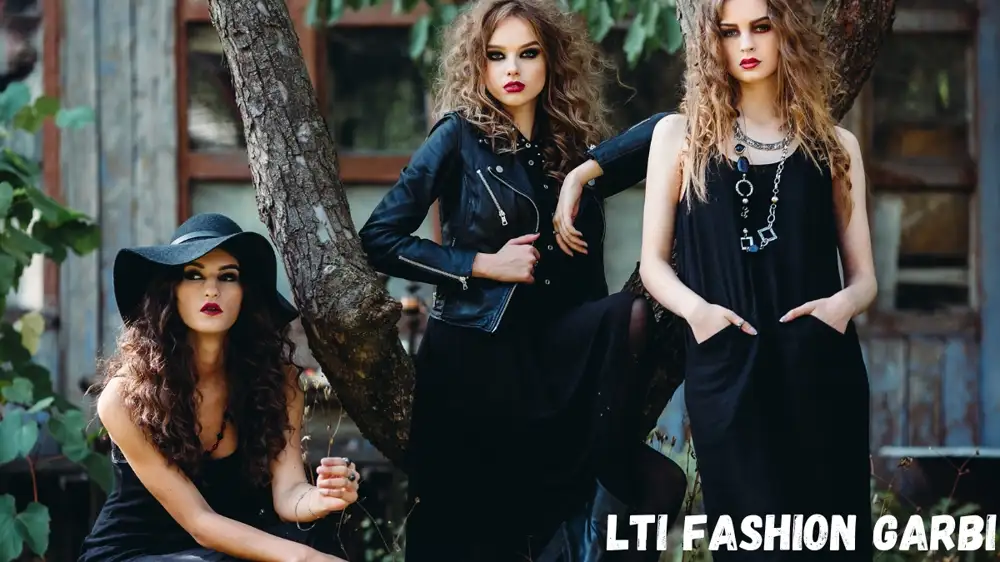
In a world where fashion trends change faster than the seasons, LTI Fashion Garbi stands out as a beacon of sustainability, innovation, and timeless style. Whether you’re a fashion enthusiast or someone looking to make eco-friendly choices, this article will guide you through everything you need to know about this emerging brand. Let’s dive into its origins, philosophy, unique offerings, and why it’s worth your attention.
What Is LTI Fashion Garbi?
LTI Fashion Garbi is a forward-thinking fashion brand that blends cutting-edge design with planet-friendly practices. The name “Garbi” draws inspiration from the Basque word meaning “clean” or “pure,” reflecting the brand’s commitment to ethical production and minimalist aesthetics. Founded in 2021 by Spanish designer Elena Ruiz and eco-entrepreneur Marco Bianchi, the brand has quickly gained traction for its innovative approach to sustainable fashion.
Unlike fast-fashion giants, LTI Fashion Garbi prioritizes quality over quantity. Each piece is crafted using recycled materials, organic fabrics, and low-impact dyes, ensuring that style doesn’t come at Earth’s expense.
The Story Behind LTI Fashion Garbi
Every great brand has a story, and LTI Fashion Garbi’s begins in the coastal town of Garbi’s, Spain. Elena Ruiz, a former luxury fashion designer, grew frustrated with the industry’s wastefulness. Meanwhile, Marco Bianchi, a tech innovator, sought ways to reduce textile pollution using biodegradable materials. Their collaboration birthed LTI Fashion Garbi—a brand that merges Elena’s eye for elegance with Marco’s sustainability expertise.
The duo launched their first collection in 2022, featuring reversible jackets and modular dresses that could be styled in multiple ways. The response was overwhelming, with pieces selling out within weeks. Today, their designs are worn by eco-conscious celebrities and featured in major fashion magazines.
Core Philosophy: Fashion That Cares
At its heart, LTI Fashion Garbi operates on three principles:
- Sustainability First:
Every garment uses materials like SeaCell (a seaweed-based fabric), recycled polyester, and organic cotton. Even their buttons are made from coconut husks! - Timeless Design:
Instead of chasing trends, the brand focuses on versatile, classic silhouettes. Think tailored blazers, wrap dresses, and unisex jumpsuits that never go out of style. - Transparency:
Customers can scan a QR code on their clothing tag to trace the item’s journey—from cotton farms in Portugal to solar-powered factories in Barcelona.
What Makes LTI Fashion Garbi Unique?
Here’s where the brand truly shines. Let’s explore features you won’t find in other eco-friendly labels:
1. The “Garbi Loop” Recycling Program
LTI Fashion Garbi encourages customers to return old garments (from any brand) in exchange for store credit. These items are either upcycled into new collections or broken down into raw materials, reducing landfill waste.
2. Climate-Positive Packaging
Your order arrives in compostable bags embedded with wildflower seeds. After unwrapping, plant the bag in soil, water it, and watch flowers bloom!
3. Modular Clothing System
Their patented “Mix & Match” line lets you snap sleeves, collars, or hems onto base garments. One dress can transform into 10+ outfits, perfect for travelers or minimalists.
4. Carbon-Negative Production
The brand offsets 110% of its carbon footprint by investing in reforestation projects in the Amazon.
How to Style LTI Fashion Garbi Pieces
Wondering how to incorporate these sustainable staples into your wardrobe? Here are some ideas:
- Office Chic: Pair a tailored SeaCell blazer with high-waisted organic cotton trousers. Add minimalist cork heels for a polished look.
- Weekend Casual: Throw on a reversible bomber jacket (one side neutral, the other bold) with recycled denim jeans.
- Evening Glam: Opt for a modular silk dress—attach a detachable sash for drama or keep it sleek for cocktail hour.
Pro Tip: Use the brand’s app to virtually “try on” looks and mix pieces before buying!
Sustainability Secrets You Haven’t Heard Before
While many brands tout eco-friendly practices, LTI Fashion Garbi goes the extra mile:
- Dyeing with Bacteria:
Their latest collection uses pigment-producing bacteria instead of chemical dyes, a technique so novel it’s still under wraps in labs! - Zero-Waste Patterns:
Garments are cut using AI algorithms that leave no fabric scraps behind. Remnants become hair accessories or stuffing for biodegradable cushions. - Employee Welfare:
10% of profits fund education programs for factory workers’ children, a detail rarely highlighted in sustainability reports.
Where to Buy LTI Fashion Garbi
The brand avoids traditional retail to keep costs (and emissions) low. Instead, shop via their:
- Online Store: Enjoy free worldwide shipping on orders over €150.
- Pop-Up Shops: Temporary stores in cities like Berlin, Tokyo, and Los Angeles feature interactive exhibits on sustainable fashion.
- Partner Boutiques: Select eco-conscious stores in Europe stock limited editions.
The Future of LTI Fashion Garbi
The brand isn’t slowing down. Upcoming projects include:
- Home Collection: Organic linen bedding and seaweed-fiber towels.
- Rental Service: Subscribe to rotate outfits monthly, reducing closet clutter.
- AI Stylist: A tool that suggests outfits based on your calendar events and weather!
Why LTI Fashion Garbi Deserves Your Attention
In a market flooded with greenwashing, this brand delivers genuine impact. Every detail aligns with a greener future, from carbon-negative logistics to empowering workers. Plus, their designs prove sustainability doesn’t mean sacrificing style.
5 Unique FAQs About LTI Fashion Garbi
1. “Does LTI Fashion Garbi offer inclusive sizing options, such as plus sizes or petite ranges?”
Yes! LTI Fashion Garbi prioritizes inclusivity with sizes ranging from XXS to 4XL. Their “Universal Fit” collection features adjustable waistbands, stretch-friendly organic fabrics, and modular designs that adapt to diverse body shapes. For petite customers, select styles like cropped blazers and ankle-length trousers are tailored to shorter proportions. The brand also crowdsources feedback via social media to expand sizing options seasonally.
2. “What is the brand’s return or exchange policy for online purchases?”
LTI Fashion Garbi offers a 30-day hassle-free return policy for unworn items with original tags. Exchanges are free, but customers cover return shipping unless the item is defective. To reduce waste, they incentive store credit over refunds by offering a 10% bonus on credit conversions. For international returns, partner boutiques in major cities act as drop-off points to cut carbon emissions.
3. “Are LTI Fashion Garbi’s bacterial-dyed garments safe for sensitive skin?”
Absolutely. The bacteria-derived pigments are non-toxic and hypoallergenic, tested rigorously under EU ecological standards. These dyes lack harsh chemicals like formaldehyde or azo compounds, making them ideal for sensitive skin. However, the brand recommends washing bacterial-dyed items separately in cold water initially to preserve color vibrancy.
4. “Does the brand provide repair services for damaged clothing to extend garment life?”
Yes! LTI Fashion Garbi’s “Wear & Care” program offers free minor repairs (e.g., loose buttons, snapped modular clips) within the first year of purchase. For major repairs, like torn seams or zipper replacements, they connect customers with local eco-tailors in their network. Customers can also trade heavily damaged items for recycling credits via the Garbi Loop program.
5. “How does LTI Fashion Garbi ensure fair labor practices across its supply chain beyond funding education programs?”
Beyond supporting workers’ children, the brand adheres to Fair Wear Foundation guidelines, ensuring:
- Living Wages: Factory workers earn 20% above regional minimum wages.
- Safe Conditions: Regular audits guarantee ventilation, clean water, and breaks at solar-powered factories.
- Gender Equity: 70% of leadership roles are held by women, including farm cooperatives in Portugal.
Transparency reports detailing labor practices are updated quarterly on their website.
Final Thoughts
LTI Fashion Garbi isn’t just a label—it’s a movement. By choosing their clothing, you’re voting for a world where fashion respects people and the planet. Ready to join the revolution? Explore their collections today and redefine what it means to dress well.
-
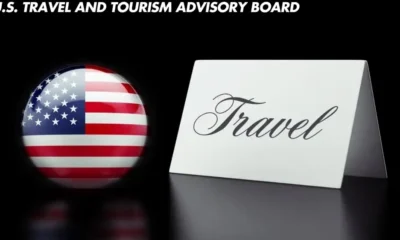
 Travel6 months ago
Travel6 months agoTop 5 Ways Stephen Revetria Elevates the U.S. Travel and Tourism Advisory Board
-

 Crypto7 months ago
Crypto7 months agoUnlock 7 Powerful Cryptocurrency Insights: Delving into NewzNav.com’s Crypto Archives
-

 Technology7 months ago
Technology7 months agoHydrogen Water Machines: Revolutionizing Hydration and Wellness
-
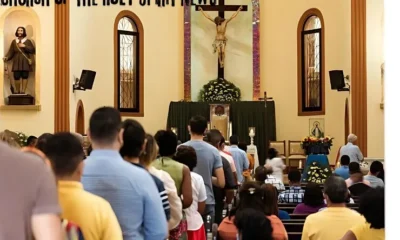
 NEWS & Society7 months ago
NEWS & Society7 months agoChurch of the Holy Spirit News: Events & Impact
-

 Games7 months ago
Games7 months agoDownload Tekken 6 PC: A Comprehensive Resource

